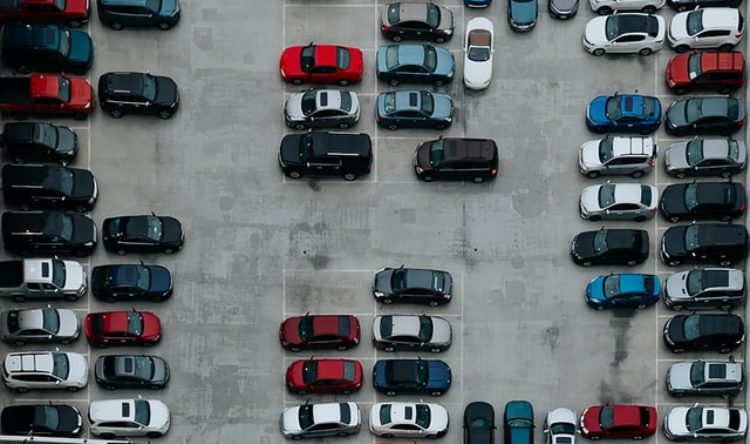Cars driving second income
More people are utilising their four wheeled asset to earn and save more money
Drivers are making their car ‘earn its keep’ as they battle against spiralling living costs.
That’s the conclusion of a new research study by the AA.
It finds that a sixth (14%) of all drivers are looking to their cars as a way of pulling in extra income.
House and home
The top way drivers are using their car to beat the cost-of-living crisis is to move house under their own steam to avoid paying a removals company (8%), a smaller proportion (2%) are using their car to bring in a second income via delivery or courier work. This option was highest amongst skilled and semi-skilled manual workers (4% and 3% respectively).
Young drivers aged 18-to-24 are by far and away the most likely to be making their car earn its keep (47%). Those aged over 65 are the least likely (10%).
Amongst these younger drivers, 24% have used their car to move house; 15% have increased the amount they charge friends and family for lifts; 12% have used it for a second job (e.g. delivery or courier work); 3% have used it for private hire taxi work and 14% have gone on a hunt for loose change behind the seats.
Riding economics
According to Edmund King, AA president, the last six months have been “a rollercoaster”.
Spiralling fuel prices, coupled with the cost of living crisis, are pushing drivers to look to their cars as sources of extra income or money saving.
“Younger drivers are the most likely to pass on increased fuel costs for giving mates a lift and the most likely to use their car for a second job.
“It’s not just young drivers who are being affected though. The research shows drivers across the board, of all ages, are looking for ways to either save on outgoings or bring in extra income.
“Drivers need support to ensure they are not priced off the road. Fuel price transparency would be a good place to start – ensuring they are paying a fair price at the pumps.”
Taking a different view
Besides using their car to earn extra income, many drivers are changing habits, in and out of their vehicles, to save money.
More than one third (37%) of drivers said they have already adopted eco-driving techniques and another 37% said they would consider doing so to bring down their monthly bills.
Older drivers were the most likely to say they have turned to eco-driving to beat the cost-of-living crisis (38%) and young drivers the least (30%).
Outside of driving, two thirds said they have already cut down on their household electricity (66%) and gas (65%) usage. More than half (57%) said they had cut down on takeaways and meals out and half said they had started buying cheaper food brands.
Its the economy…
Mark Born, head of training at AA Diving School, says: “Eco driving can really help bring the cost of your fuel bill down.
“Simple changes, such as changing gear earlier and making sure you aren’t carrying unnecessary luggage add up.
“We have seen drivers make savings of up to one fifth on fuel costs. With the cost of fuel as it currently is, this can make a valuable change to your weekly outgoings.
“If you are unsure about how to drive in a more eco-friendly way then a couple of hours with a local driving instructor can help boost your skills and improve your fuel consumption.”
Ten top tips
- Smooth and gentle – drive smoothly, accelerate gently and read the road ahead to avoid braking unnecessarily. Decelerate smoothly by releasing the accelerator in time, leaving the car in gear.
- Keep rolling – stopping then starting again uses more fuel than rolling. Slow early for traffic lights or approaching a queue and you might not have to stop completely.
- Change up earlier – don’t labour the engine but try changing up at an engine speed of around 2,000 rpm (diesel) or 2,500 (petrol). Since 2014 new car models have been fitted with a gear shift indicator to encourage use of the most efficient gear.
- Use your air-con wisely – at low speeds, air-con increases fuel consumption but at higher speeds the effect is less noticeable. Try opening the windows around town and save the air-con for high-speed driving. Don’t leave it on all the time but running it at least once a week helps keep the system in good condition.
- Cut down on the electrics – turn off your rear window heater, demister fan and headlights when you don’t need them.
- Stick to the limit – going faster uses more fuel. Drive at 70mph and you’ll use up to 9% more than at 60mph and up to 15% more than at 50mph. Taking it up to 80mph can use up to 25% more fuel than at 70mph.
- Save weight – extra weight means extra fuel so if you don’t need it, take it out.
- Cut drag – roof-racks and boxes add to your fuel consumption. Pack carefully to reduce drag or take it off.
- Don’t hang around – idling wastes fuel and your engine warms up more quickly when you’re moving so don’t start the engine until you’re ready to go.
- De-icing – scrape ice in the winter rather than leave your car idling to warm up.
You can find more economy driving tips here.






